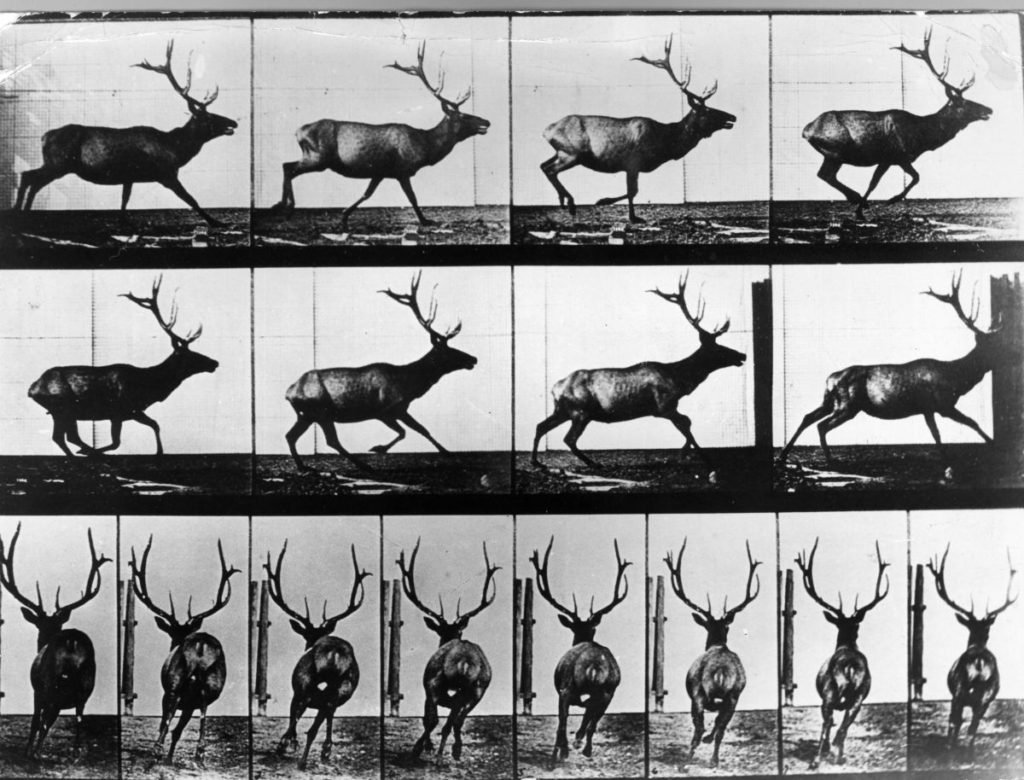Eadweard Muybridge, (April 9, 1830 – May 8, 1904) was an English photographer important for his pioneering work in photographic studies of motion and in motion-picture projection. Muybridge’s photography of moving animals captured movement in a way that had never been done before. His work was used by both scientists and artists. He immigrated to the United States as a young man but remained obscure until 1868, when his large photographs of Yosemite Valley, California, made him world famous. Muybridge’s experiments in photographing motion began in 1872, when former California Governor Leland Stanford contacted him to help settle a bet. Speculation had raged for years over whether all four hooves of a running horse left the ground at the same time. Stanford believed they did, but the motion was too fast for the human eye to detect. In 1872, Muybridge began photographing a galloping horse in a sequence of shots. In 1877, he returned to California and resumed his experiments in motion photography, using a battery of from 12 to 24 cameras and a special shutter he developed that gave an exposure of 2/1000 of a second. This arrangement gave satisfactory results and proved Stanford’s contention.
In 1883, Muybridge was invited to continue his research at the University of Pennsylvania and for the next few years produced thousands of photographs of humans and animals in motion. Near the end of his life, he published several books featuring his motion photographs and toured Europe and North America, presenting his photographic methods using a projection device he’d developed called the Zoopraxiscope. Muybridge’s innovative camera techniques enabled people to see things otherwise too fast to comprehend, and his sequence images continue to inspire artists from other disciplines to this day. His work links to the idea of variation and similarity as he is capturing the slight, varying motions and movements of the one subject. His photographs explore similarity as despite the slight differences of motion within his images, the individual photographs are interchangeable. His work is extremely interesting and innovative and I will respond to it with my own photo shoot based around motion.



